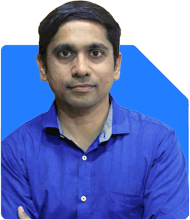
Hi Myself Sanjeev Kumar from Himachal Pradesh, I am investing in mutual funds from last 3 years on below mutual funds through SIP
1. Aditya birla multicap fund (regular growth) ---- Rs 1000 monthly
2. Invesco India flexi Cap fund (Plan growth) ------ Rs 1000 monthly
3. Invesco India Multicap fund (regular growth) ---- Rs 1000 monthly
4. Kotak multicap fund (regular) ------------------------- Rs 1000 monthly
5. Kotak emerging equity fund (growth) --------------- Rs 1000 monthly
6. Kotak ELSS tax saver fund ------------------------------- Rs 500 monthly
7. Union tax saver fund (ELSS) ---------------------------- Rs 1500 monthly
8. Bandhan Nifty 200 momentum 30 index fund (regular plan) --- Rs 1000
9. Kotak multiasset fund ------------ Rs 1000 monthly (started a month ago)
10. UTI EFT Gold fund ------------------ Rs 1000 /-
Apart from above, I am investing in below also
1. PPF ---------------- 1.5 lac annually
2. NPs ---------------- 0.5 lac annually
3. LIC ----------------- 0.5 lac annually
Sir you are requested to review my portfolio, Is this portfolio good enough to produce at least 60- 70 lakhs return in next 10-12 years or some reshuffling is required. If yes kindly suggest some good funds. Hoping to hear from you soon Thanks
Ans: You have a fairly diversified portfolio with exposure across equity funds, tax-saving instruments, and fixed-income products. Let's evaluate your current portfolio:
Equity Exposure
Multicap and Flexi-cap Funds:
You have good exposure to multicap and flexi-cap funds. These funds are beneficial as they provide exposure across different market caps (large, mid, small), offering balanced risk and growth potential.
The fund choices are varied, but some of them overlap in terms of the equity segments they cover. This may lead to duplication, reducing the overall diversification.
Tax-saving ELSS Funds:
Both Kotak ELSS Tax Saver Fund and Union Tax Saver Fund provide tax benefits under Section 80C. This is an excellent strategy for reducing taxable income while simultaneously growing wealth over the long term. However, having two ELSS funds with similar objectives may not be necessary.
Consider reviewing the performance and making sure that your tax-saving investments are optimized for returns.
Nifty and Gold Exposure:
Your investment in the Bandhan Nifty 200 Momentum Index Fund introduces some exposure to index funds, but remember, index funds tend to track market performance and do not offer active management. While this can be a cost-effective option, you might miss out on higher growth opportunities that actively managed funds can offer.
Gold exposure via UTI Gold ETF is a good hedge against inflation, but it is a passive investment and does not generate income.
Fixed Income Exposure
PPF and NPS:
Your investment in PPF (Public Provident Fund) and NPS (National Pension Scheme) is a solid long-term savings strategy. These provide safety, tax benefits, and long-term growth.
PPF locks your funds for 15 years, but it offers guaranteed returns, which is an excellent option for conservative savings. NPS, however, provides exposure to equity and debt markets and is a good retirement planning tool.
LIC:
LIC investments are a combination of insurance and savings. However, considering the long-term performance and opportunity cost, it might be worth reviewing whether these investments align with your future goals or if reallocating these funds into mutual funds could offer better returns.
Investment Amount and Goals
Given your monthly SIP of Rs. 10,500 and annual investments of Rs. 2.5 lakh in PPF, NPS, and LIC, it is essential to have a clear vision of your financial goals over the next 10-12 years.
Expected Return of Rs. 60-70 Lakh:
Based on your goal of accumulating Rs. 60-70 lakh in the next 10-12 years, your current portfolio seems reasonable. However, there are areas where optimization can boost the chances of meeting your goal.
Suggested Portfolio Reshuffling
Reduce Fund Overlap:
You are holding multiple multicap funds with similar objectives. It might be wise to consolidate these into one or two strong performers to reduce duplication.
Evaluate whether the Nifty 200 index fund is in line with your preference for actively managed funds.
Focus on Actively Managed Funds:
Active Management: Actively managed funds tend to provide higher returns, especially in fluctuating markets. They also help mitigate risks, unlike index funds, which follow market movements and may not outperform during volatile periods.
Consider focusing on large-cap, mid-cap, and small-cap funds for equity growth while also ensuring there is exposure to sectoral funds and thematic funds for extra diversification.
Diversified Growth-Focused Funds:
Given your long-term horizon, including growth-oriented funds is crucial. You may consider adding more funds with a history of consistent outperformance in the equity space.
Tax Optimization:
Your tax-saving investments are well-distributed between ELSS, PPF, and NPS. However, reviewing your ELSS funds for performance is essential. Choose funds that consistently outperform their benchmark and offer strong long-term growth.
Gold Exposure:
Gold exposure via ETFs is beneficial, but consider limiting it to around 5-10% of the portfolio as a diversification hedge. You may also explore mutual funds that invest in gold.
Final Insights
Consolidate Funds: Reduce the number of funds to avoid overlap and improve focus on quality investments.
Increase Focus on Actively Managed Funds: Focus on actively managed equity funds to achieve better returns in the long run.
Evaluate Tax-Saving Instruments: Review your ELSS investments for their performance and align them with your risk profile.
Goal-Oriented Approach: Stay focused on your long-term goals and ensure that your asset allocation matches your risk tolerance and time horizon.
Finally, given your clear objective of growing wealth to reach Rs. 60-70 lakh over the next 10-12 years, restructuring your portfolio to optimize risk and returns will significantly help you achieve your financial goals.
Best Regards,
K. Ramalingam, MBA, CFP,
Chief Financial Planner,
www.holisticinvestment.in
https://www.youtube.com/@HolisticInvestment






























